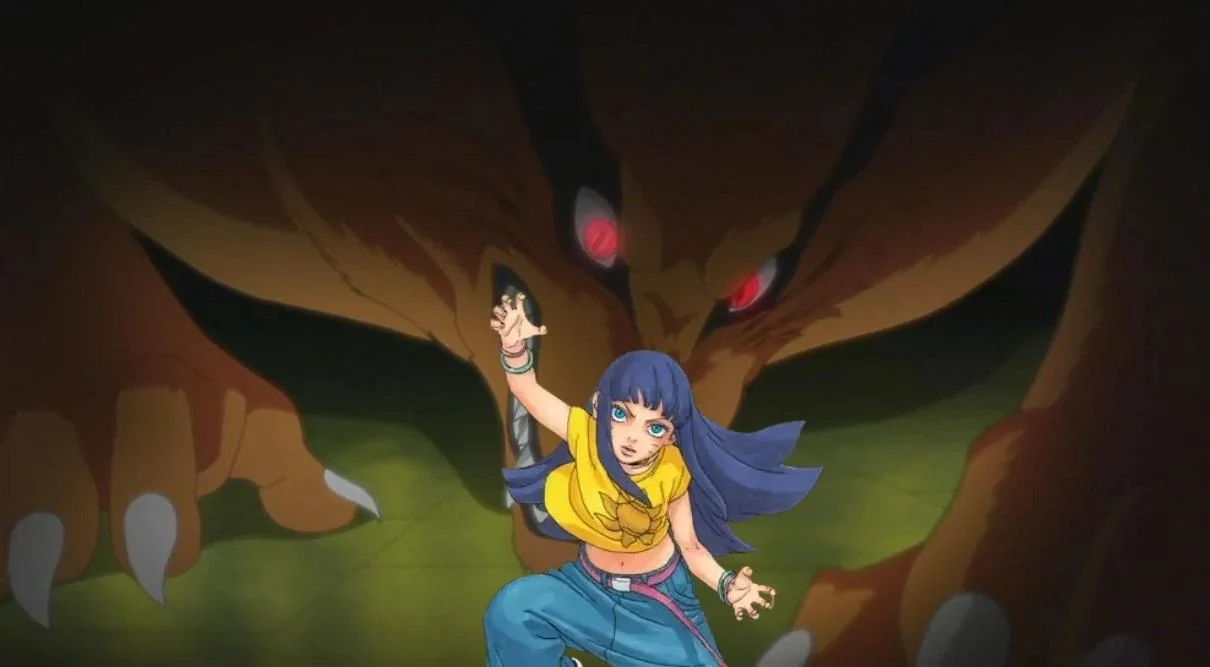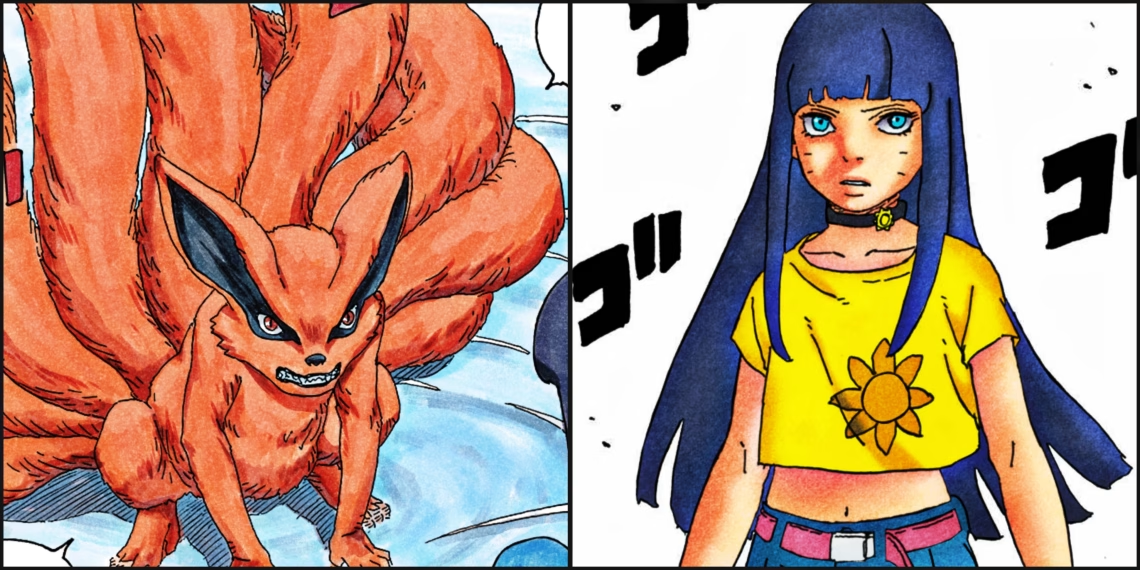The latest installment of Boruto: Two Blue Vortex has ignited a firestorm of intrigue among fans, as Himawari, Naruto’s second child, takes center stage in a revelation that shakes the very foundations of what we thought we knew about the Tailed Beasts.
As the chapter unfolds, Himawari finds herself in a perilous situation, fleeing from a formidable Ten-Tails soldier alongside Team Ten. But it’s within the depths of her own mind where the true bombshell drops – she has become one with Kurama, the legendary Nine-Tailed Fox.
Hidden Truths Behind Tailed Beast Deaths

This development raises eyebrows and questions alike, as it seemingly contradicts the established understanding of the Tailed Beasts’ existence. Naruto himself has previously emphasized that while the Tailed Beasts can indeed be slain, their essence endures, eventually reforming in nature to restart the cycle of Jinchuriki.
However, Boruto: Two Blue Vortex throws a curveball by revealing a hitherto unknown aspect of the Tailed Beasts’ afterlife – their essence doesn’t always return to nature.
Kurama himself enlightens Himawari on this matter, explaining that while the death of a Tailed Beast isn’t permanent, their essence doesn’t necessarily reappear in the natural world. Instead, it can find a new vessel, as it did with Himawari, where it merges and manifests its power.

This revelation marks a significant departure from the established lore, challenging the long-held belief that the Tailed Beasts are inexorably bound to the cycle of life and death in the ninja world’s chakra ecosystem.
The discovery that Kurama’s essence has taken residence within Himawari, effectively resurrecting the Nine-Tails in a new form, defies conventional wisdom and opens up a plethora of new possibilities for the series’ narrative trajectory.
Himawari’s newfound connection with Kurama also serves as a poignant reminder of the bonds between humans and Tailed Beasts, showcasing the potential for harmony and cooperation beyond the confines of traditional Jinchuriki relationships.




